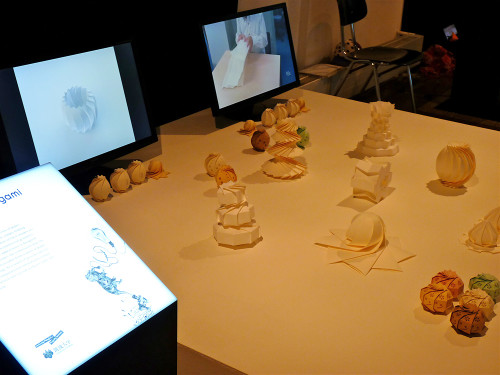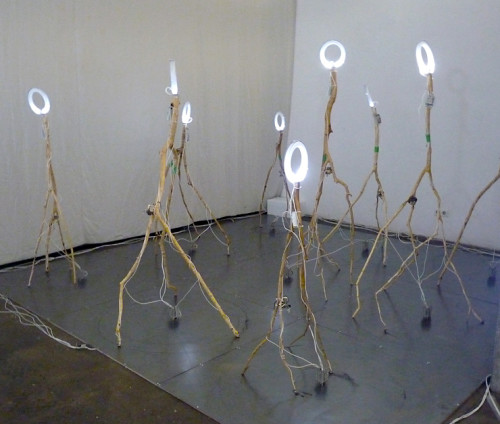The University of Tsukuba lies 60 km northeast of Tokyo in Tsukuba Science City which represents one of the world’s largest coordinated attempts to accelerate the rate of and improve the quality of scientific discovery. Some of the graduates and/or faculty have been covered here in an earlier post as producing device art projects such as Sachiko Kodama’s Morpho Tower, Ryota Kuwakubo’s LoopScape and Nicodama and Hiroo Iwata’s Media Vehicle. In this second part, I’ll highlight a couple of other creative artists who have been associated with the U. of Tsukuba’s R & D. We can only hope for an interest in device art to blossom in the U.S., but it appears that most American designers see it as too risky an undertaking while the general public seems ready for something new and refreshing in the area of artistic popular culture.
• Let’s introduce another work by Hiroo Awata. Although traveling on foot is the most intuitive style of locomotion, proprioceptive feedback from walking is not provided in most applications of virtual environments. With the Torus Treadmill, a virtual infinite surface is created inside a compact area with twelve sets of treadmills connected and driven in perpendicular directions. One can walk in any virtual direction while your real-world position is fixed. It’s a bit disorientating as you’ll see in these short video snippets. I kept feeling as if I needed to force the mechanism (leaning into it) instead of just relaxing with a nice virtual stroll.
• Here we have the work of Jun Mitani who creates Spherical Origami. The origami aspect is kept – folding a single sheet of paper into an artwork – but there is the added element of the possibility of curved surfaces. Using precise computer aided calculations, each paper surface shows the generated fold lines that are to be used in the process of paper manipulation.
• Twilight was one of those works that I could’ve watched for an hour. As the tree branches shake, the fluorescent lights attached to the tops would flicker in erratic patterns. You’ll notice the bottom tips moving along the steel plates motivated by a vibrating motor which creates the on-off irregularity of the light sources. Junya Kataoka [unable to find a website] has provided us with a work that emphasizes contrasts: darkness and light, natural and artificial, as well as the biotic and inorganic.
(thanks to Interactive Design)
(thanks to Paolo Tonon)



